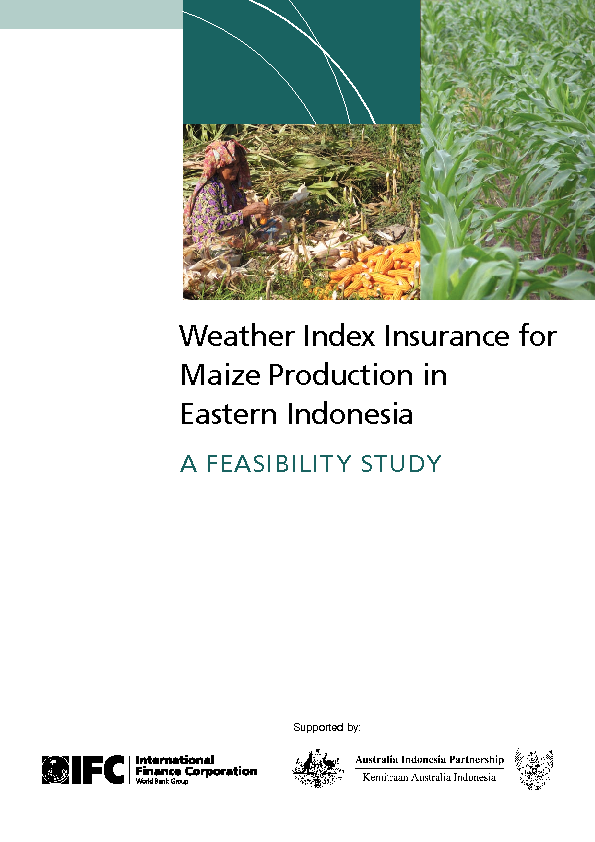Weather Index Insurance for Maize Production in Eastern Indonesia

This study explores the feasibility of weather index insurance (WII) in providing cost-effective ways for rural dwellers to manage risk and better cope with catastrophic events. The case study analyzed is drought coverage for maize production risk in Eastern Indonesia.
Indonesia is considered one of the more vulnerable countries to hydro-meteorological risks in Asia. In some agricultural areas, harvest and production dip significantly during ENSO (El Niño Southern Oscillation) events due to belownormal rainfall. Indonesian production is highly dependent upon rainfall. Only 17 percent of the country’s cultivated area has access to irrigation infrastructure, and only 10 percent of this land is effectively irrigated. More than 80 percent of agricultural activity depends on rainfall for irrigation. Out of a population of 235 million, 57 percent earn their living from the agricultural sector and 90 percent of them are farmers who are susceptible to weather risks.
